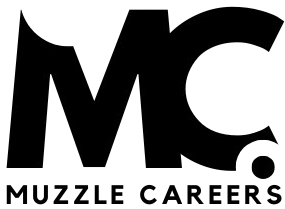Remember when your parents told you that you could be anything you wanted? Well, they weren’t exactly lying, but they definitely oversimplified things.
Here’s the deal: while you do have a wealth of potential career paths, true success comes from zeroing in on the options that truly fit you. As a career coach who’s worked with hundreds of clients, I’ve seen firsthand how an overabundance of choices can be paralyzing. Many job seekers end up taking one of two problematic approaches:
- Grabbing the first halfway decent offer that comes along, regardless of fit.
- Scattering their efforts so widely that nothing really sticks.
Neither of these strategies leads to long-term satisfaction. Let me introduce you to Sue, a client whose story perfectly illustrates this dilemma.
Sue’s Struggle: A Case Study in Career Confusion
Sue is an incredibly talented writer. She landed what looked like a dream job on paper – good salary, impressive title, respected company. But a few months in, she realized there was a major problem: the company’s laid-back culture clashed hard with her ambitious, go-getter personality.
Feeling stuck, Sue came to me with a head full of swirling options:
- Should she stick it out, trying to adapt to the culture?
- Start hunting for a similar position at a different company?
- Take the plunge into full-time freelance writing?
- Keep the steady paycheck but start freelancing on the side?
And that was just the beginning. Each of those paths branched out into dozens more questions:
- If she stays, how can she advocate for change without rocking the boat?
- If she looks elsewhere, what industries should she target?
- As a freelancer, should she specialize in a niche or be a generalist?
- How much savings does she need before making a big move?
Sue felt paralyzed. Every option seemed to lead to ten more decisions, each with its own pros and cons to weigh.
My Toothbrush Replacement Dilemma
Now, you might be thinking, “Come on, choosing a career is supposed to be hard. That’s different from normal decisions.” But here’s the thing – this overwhelming feeling crops up everywhere in our modern lives, even with seemingly simple choices.
Let me share a personal example. A few months back, I realized my toothbrush was way past its prime (gross), I know, but we’ve all been there. So, I hopped online to order a replacement, thinking it would take two minutes tops.
Two hours later, I was still staring at my screen, drowning in options:
- Manual or electric?
- Soft, medium, or firm bristles?
- Standard head or those weird angled ones?
- Classic plastic or eco-friendly bamboo?
- Basic model or one with fancy pressure sensors and Bluetooth connectivity? (Yes, that’s a real thing)
- Do I need a tongue scraper? Gum massagers?
- What about all these wild colors and patterns?
I started out needing a simple tool to clean my teeth. I ended up facing an existential crisis about oral hygiene, environmental responsibility, and whether I’m the kind of person who needs a “smart” toothbrush.
The Paradox of Choice: When More Options Lead to Less Satisfaction
This feeling of being overwhelmed by options isn’t just in our heads. There’s a well-researched psychological principle behind it called the Paradox of Choice. Basically, while having some choice is good, too many options often lead to:
- Increased anxiety about making the “wrong” choice
- Decision paralysis, where we put off choosing altogether
- Less satisfaction with our eventual decision, as we worry about the paths not taken
In other words, more options don’t necessarily make us happier – they can actually stress us out and make decisions harder.
Breaking Free: The Power of Elimination
So, how do we escape this cycle of indecision, both in big career moves and everyday choices? The key is to get ruthless about eliminating options.
Let’s go back to Sue’s situation. Here’s how we tackled her career confusion:
- Rapid-Fire Questions: We did a quick round of yes/no questions to immediately cross off some choices:
- Can she afford to quit right now without another job lined up? (No)
- Does she prefer the structure of an office or the flexibility of remote work? (Office)
- Is she willing to relocate? (No, family ties)
- Identifying Deal-Breakers: We dug into what aspects of her current job were non-negotiable in a new role:
- Collaborative team environment
- Clear path for advancement
- Projects that align with her personal values
- Prioritizing Industries: Sue listed industries she was interested in, then we ranked them based on her excitement level and relevant experience.
- Setting a Realistic Timeline: We established a 6-month plan for her job search, balancing urgency with the need for a thorough exploration.
This process felt scary at first. Sue worried about closing doors or missing out on the “perfect” opportunity. But as we eliminated options, something interesting happened – she felt a weight lifting off her shoulders. Instead of trying to compare wildly different paths, she could focus on the nuances between similar opportunities.
Practical Filters for Your Job Search
You can apply this same strategy of elimination to your own career exploration. Here are some key filters to consider:
- Location:
- Are you willing to relocate?
- How long of a commute can you tolerate?
- Do you need to stay close to family?
- Industry:
- What fields genuinely interest you?
- Where does your experience translate best?
- Are there industries you want to avoid for ethical reasons?
- Job Title/Role:
- What core skills do you want to use daily?
- Do you prefer specialist or generalist positions?
- What level of responsibility are you ready for?
- Company Size/Type:
- Startup, mid-size, or large corporation?
- For-profit or non-profit?
- Traditional office or remote-first culture?
- Salary Range:
- What’s the minimum you need to cover expenses?
- What’s a realistic range given your experience?
- How do you prioritize salary vs. other benefits?
- Required Experience:
- What roles match your current skill set?
- Are you willing to take a step back for a career change?
- Do you need additional training/education for your goals?
Remember, the goal isn’t to limit yourself forever. It’s about creating a focused starting point to prevent decision paralysis.
Overcoming the “What If?” Fear
I know what you’re probably thinking: “But what if I eliminate the wrong thing? What if I miss out on the perfect job because I narrowed too much?”
This fear is natural, but here’s the reality – your choices aren’t set in stone. As you network, research industries, and go through interviews, you’ll naturally refine your focus. You might discover new opportunities you hadn’t considered or realize certain paths aren’t as appealing as you thought.
My Own Job Search Journey
Let me share a bit about my recent career transition. I started with two main paths I wanted to explore:
- Content marketing roles at marketing agencies
- Career counseling positions in higher education
Both leveraged my writing skills and interest in helping others, so they seemed like good fits on paper. I created separate resumes, started networking in both fields, and applied to a mix of positions.
After just two weeks and four interviews (two in each field), something became crystal clear – the career counseling roles energized me in a way the marketing positions just didn’t. I found myself getting excited about the counseling interviews, while the marketing ones felt like a chore.
This realization allowed me to eliminate the entire marketing track from my search. Suddenly, instead of juggling two different career paths, I could dive deep into exploring:
- Different types of universities and their career services models
- Various counseling approaches and methodologies
- Opportunities for program development and workshop facilitation
My job search became so much more focused and effective. I wasn’t wasting time on applications that didn’t truly excite me, and I could tailor my networking efforts specifically to the higher education world.
The Power of Going Deep, Not Wide
This principle of “going deep, not wide” applies beyond just career choices. Let’s revisit my toothbrush saga as a small-scale example.
Once I decided to stick with a manual brush (eliminating the entire world of electric options), comparing became so much easier. Instead of feeling overwhelmed by vastly different products, I could focus on the nuances between similar options:
- The GUM Summit Plus Compact with its angled bristles and thumb grip
- A bamboo brush with charcoal-infused bristles for natural whitening
- A basic Oral-B with a tongue scraper on the back
These were all manual toothbrushes, so I could really dig into the small differences that mattered to me – bristle softness, handle ergonomics, environmental impact.
Putting It Into Action: Narrowing Your Own Search
So, how can you apply these principles to your job search today? Here’s a step-by-step guide:
- Brain Dump: Write down EVERY job, industry, or company you’ve considered. Don’t judge, just get it all out there.
- Gut Check: Go through your list and cross off anything that gives you an immediate “ugh” feeling. Trust your instincts.
- Research: For the options that remain, do some quick research. Look at job descriptions, salary ranges, and day-to-day responsibilities.
- Prioritize: Rank your remaining options based on excitement level, realistic fit, and alignment with your values.
- Top Three: Choose the top three paths that genuinely energize you. These become your focus.
- Eliminate: Be ruthless about crossing off everything else, at least for now.
- Deep Dive: For your chosen paths, start really digging in. Network with people in those fields, tailor your resume, and immerse yourself in industry news.
- Reassess: After a few weeks of focused effort, check in with yourself. Are you still excited about these paths? If not, you can always go back to your original list and promote a new option to explore.
Remember, the goal isn’t to limit yourself forever. It’s about creating a starting point focused enough that you can actually take action instead of spinning your wheels.
Embrace the Power of Choosing
Narrowing your options isn’t about settling or giving up on dreams. It’s about empowering yourself to make actual progress. By eliminating the noise of too many choices, you create space to deeply explore the paths that truly resonate with you.
Your dream job is out there. But you’ll find it a whole lot faster if you know where to focus your search.
So, take a hard look at your current career exploration. What options can you confidently eliminate today? Which paths make you feel a spark of excitement when you think about them? By honing your focus, you’ll transform that overwhelming sea of choices into a manageable pool of exciting possibilities.
The job search journey isn’t always easy, but with a clear direction, you’ll be amazed at how much progress you can make. Trust the process, be willing to adjust as you learn, and remember – every choice you make brings you one step closer to finding work that truly fulfills you.
Recommended reading:
–The Dream Job Isn’t a Myth – It’s Totally Attainable
–How to Overcome Impostor Syndrome: Your Confidence Boost Guide
–Your Ultimate Job Seeking Assistant prompts To Land Your Dream Job
TLDR;
Too many job options can paralyze your career search. To find the right path:
- List all potential careers you’re considering
- Quickly eliminate options that don’t excite you
- Use filters like location, industry, and salary to narrow further
- Focus deeply on your top 2-3 choices
- Start networking and applying within those areas
- Reassess and adjust your focus as you learn more
Remember, limiting options isn’t about settling – it’s about creating a focused starting point to make real progress in your job search. You can always expand your search later if needed.
Discover more from MUZZLECAREERS
Subscribe to get the latest posts sent to your email.








